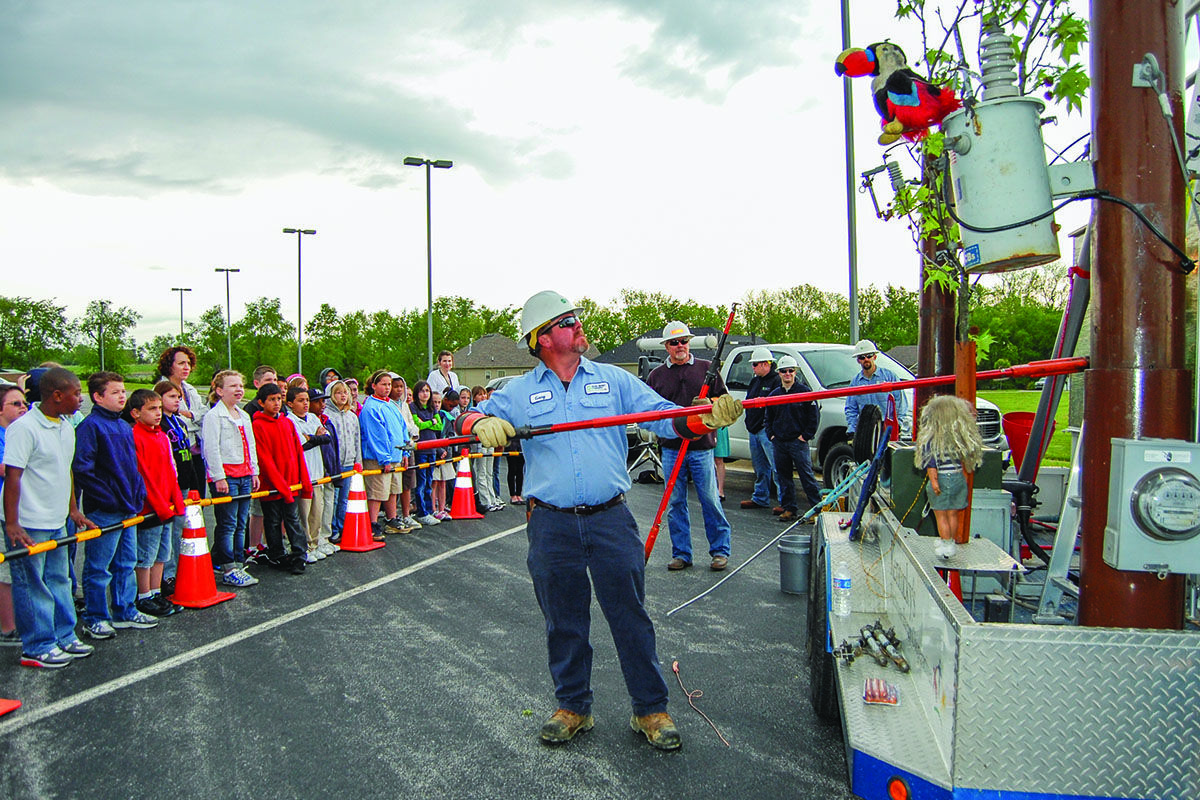Staying on safety

New rules keep improving the attention to protecting linemen
The more time I spend with linemen, the more I admire them. They’re physically strong, yet they handle delicate wires and small parts with ease. They work outdoors in all sorts of weather around the clock. And they have those amazing bucket trucks!
But here’s the part that scares me—they work amid a deadly danger that cannot be seen. You cannot look at an electrical wire and tell by any visible signs if it’s energized or not. Electricity is our reliable servant, but make a mistake and it can maim. And kill.
Worker safety is the number one priority throughout the electric utility industry. Protecting the bodies and lives of the linemen and linewomen who work with electricity day and night goes far beyond clever slogans—it’s a way of life, a way of approaching the work to be done that requires the right gear, constant training, and practice, practice, practice.
Common-sense rules
Clarence Greene, director of the Kentucky Association of Electric Cooperatives Safety and Loss Prevention division, says, “The other day I looked in a 1962 safety manual—and some of the same rules that we have today are in that old book. We’ve always had to be certain that workers wear the right kind of protective clothing, that they have the proper tools and training to work safely, that things are grounded properly, and that lines are tested to verify whether power is or is not flowing. We’ve always been dedicated to safety training, and we constantly practice to make sure that everyone knows what to do to reduce the risk of injury or death.”
Recently the U.S. Department of Labor’s Occupational Safety and Health Administration revised the rules for utility workers. The new standards are based on common sense, plus careful calculations about voltages and the laws of physics, with rules that are logically based on what really happens out in the field. But the new regulations take safety precautions to a new level of precision.
Greene says, “Until now, we had one set of rules to follow for construction, and another set for maintenance work. OSHA’s spent about 10 years figuring out how to make these rules more consistent, so we wouldn’t be confused about which rules to follow in each situation.”
Generally, the new rules focus on three key areas: improving personal safety gear, adding new safeguards for fall prevention, and reviewing safety procedures through job briefings. Linemen must now wear a face shield (similar to a welder’s mask) in many more situations where there is even the smallest chance for an electrical arc that could cause burns. New combinations of safety lines, harnesses, and extra belts must be used whenever a worker will be more than four feet above the ground. And at every job site, the foreman must go over the plan of work and review safety procedures with everyone before the work begins.
Awareness for everyone
The cost of the protective clothing and safety gear for each lineman totals about $3,500. That includes special fire-retardant t-shirts and undergarments, as well as fire-retardant outer clothing such as jeans and shirts, plus work boots and a hard hat. Each lineman also has a set of nonconductive gloves, work sleeves, outer boots that go over regular boots, plus a rain suit, and many other pieces of gear for special situations.
Every single item of safety gear must be inspected at regular intervals to make sure there are no holes, tears, scrapes, or other defects that would allow electrical current to make contact with the worker’s body. Any items with wear and tear must be replaced immediately—even a tiny hole in a glove can let deadly current through.
As important as the safety of employees is, utilities also want to protect members of the general public through education and constant reminders of the dangers. Local electric co-ops provide safety demos at schools and public events to help people understand that you cannot see whether a power line or other part of the system is actively carrying electrical current.
For the general public, linemen have one message: stay away from power lines and other parts of the electric power grid. Report downed power lines and anything else that doesn’t look normal to your local utility company, or the police or fire department. Then keep others away until professional help arrives.
Stay away from power lines
The message for school children and the general public is clear: stay away from power lines and other parts of the electric grid. And keep others away until help arrives. Throughout the year, linemen and other safety experts give demonstrations at schools to help people learn about electricity’s dangers. Linemen spend about five years learning how to work with electricity safely—and then spend the rest of their careers reviewing, practicing, and updating work procedures to stay safe.
Nancy Grant from March 2015 Issue

